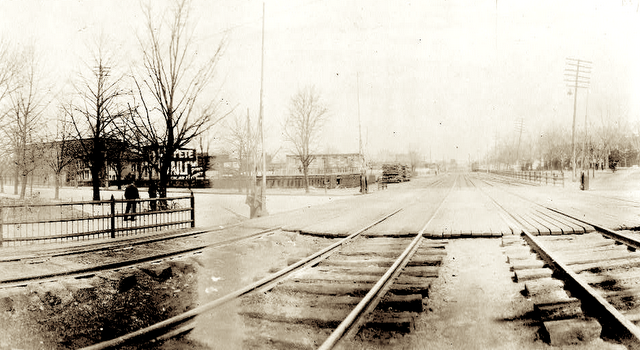
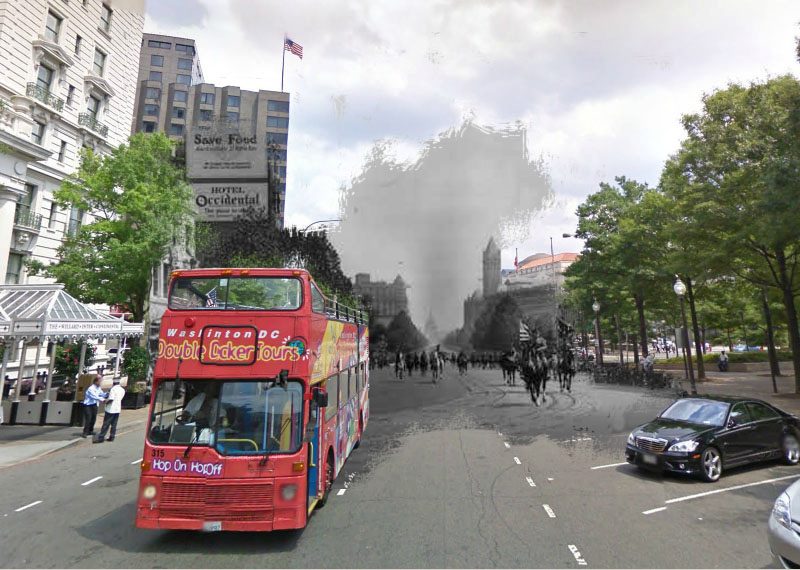
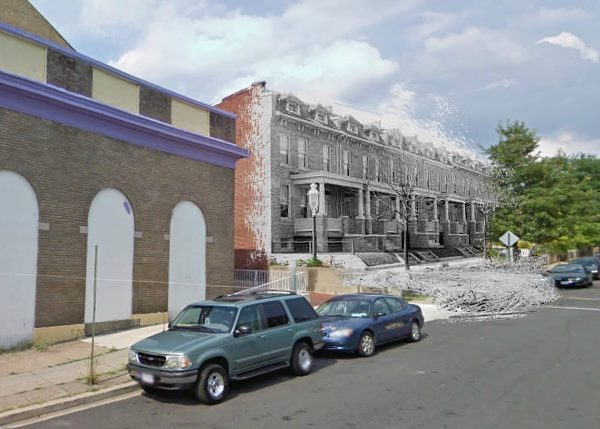
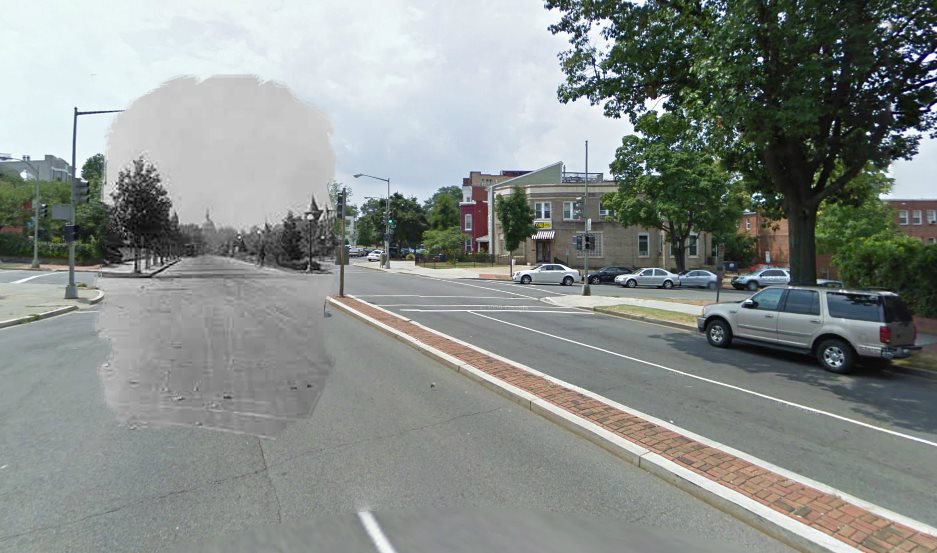
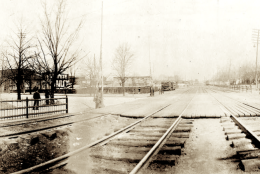
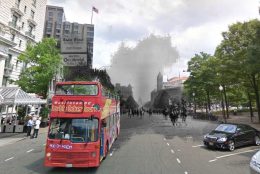
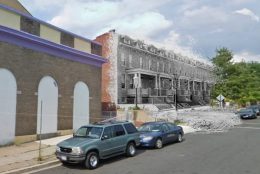
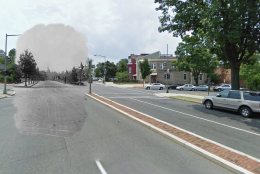
Paul D. Shinkman, wtop.com
Tw: @ShinkmanWTOP
WASHINGTON – People often ask Simon Jacobsen why more of D.C. couldn’t look like Georgetown. The 18-year veteran of architecture design has a simple answer: “Well, it did.”
The nation’s capital once held a unique position among metropolises worldwide, thanks to the combination of critical events that took place in beautiful and varied buildings, Jacobsen says. A sense of disenfranchisement with Europe and their monarchies in the wake of the world wars, and distaste for things considered “old,” led to the eventual crumbling of many of the city’s stone and mortar treasures.
To help hammer home what he sees as a disparity between historic and contemporary Washington, Jacobsen put together a blog of old photographs he found laid next to a contemporary image of the same site. “Ruined Capitol” wasn’t ever meant to be public, but its immediate popularity shows it resounds among residents city- wide.
“I was always fascinated at how a powerful city could have such a ruined majority of its architecture,” says Jacobsen, a Georgetown native and partner at Jacobsen Architecture. “The architecture we’re destroying is very important to who we are and where we came from.”
Areas such as Mt. Vernon Square, 7th, 8th, and 9th streets and the K Street corridor used to be buzzing neighborhoods of houses and small stores.
“(It was) a vibrant exchange of ideas, conversations, babies born, people dying,” Jacobsen says. “It’s almost like today we live in a parallel universe where all this history lives all around us and we don’t even know it.”
The architecture designer hopes the website will help those who walk through D.C. streets understand the “ghosts of the buildings” and culture of the people who used to live in neighborhoods where now he sees anonymous, tall glass structures.
“It’s not nostalgia,” he says. “I see it as a self-inflicted wound. Not only what Washington, D.C. did to itself, but what the United States and our culture is doing to itself.”
That sentiment seems to resonate. Within six weeks of opening the collection of photographs and maps to the public on Jan. 1, it generated 44,000 views. Four months later, and after changing its name to “VANISHED: Washington,” Jacobsen is developing an iPhone, iPad and Android apps to pair the catalog of pictures with a location-aware GPS map.
Now it has almost 70,000 followers.
But not all fans of historic buildings agree with Jacobsen’s appraisal. What some see as “ruined,” others see as “accommodating.”
The D.C. Historic Preservation Office is tasked primarily with maintaining the District’s historical and cultural resources through planning, protection and public eduction. The division of the city’s Office of Planning works with local and federal governments to implement preservation programs.
“Urban growth means that many buildings and even whole neighborhoods get replaced as cities expand to accommodate new population, new technologies, and changing needs,” says David Maloney, the D.C. state historic preservation officer, in a written statement to WTOP.
“Today’s Washington obviously couldn’t exist if it didn’t expand beyond the constraints of its 19th Century clothes,” he tells WTOP. “So while we value the perspective of looking back at the city that once was, we also know that this kind of change is an inevitable and essential part of our world, and not simply a matter of buildings being carelessly neglected and falling into disrepair.”
Land owners, not the government, are usually responsible for deciding a building has fallen into such a state of disrepair that it should be demolished instead of refurbished, Maloney says. Other factors, such as economics, dictate that usually larger buildings are essential. In an area such as downtown D.C., where property is most expensive, buildings have changed sometimes on several occasions to match the city’s growth.
“This isn’t just a bad thing, even from the architectural or preservation point of view,” he says. “Many of our most treasured historic buildings are built on the site of earlier structures.
“In fact, some of the ‘after’ shots on the ‘Ruined Capitol’ site are of buildings that are now protected as historic landmarks or parts of historic districts.”
Maloney points to areas such as Gallery Place in the center of downtown D.C., where planners were able to reconcile original buildings with newer developments to accommodate growth. Historic buildings are “great” for retail space, small offices and non-profit facilities, he says, while large buildings and high-rise apartments facilitate the density needed to maintain a thriving economy.
Jacobsen accepts that the D.C. that exists today could not fit in a series of neighborhoods like Georgetown. But he cautions what he sees as a slippery slope in the development trends of recent decades.
“We must not be so quick to throw away the car because the ashtray is full,” he says. “We have to maintain our neighborhoods and maintain our buildings.
“They’re like people … all manner of external events affect them.”
(The picture, by the way, depicts the site where Union Station stands today.)
Using HistoryPin.com, Google Maps and a touch of Photoshop, WTOP’s Paul D. Shinkman created a series of historic photos “bleeding” into modern day. Check out the gallery above right.
Visit the Ruined Capitol blog here.
Fans of history architecture and preservation should also check out GhostsofDC.org and HistoryPin.com.
Follow Paul and WTOP on Twitter.
(Copyright 2012 by WTOP. All Rights Reserved.)







